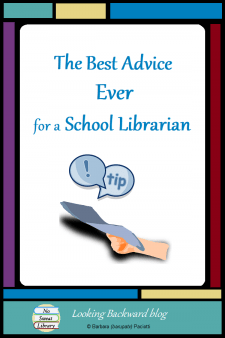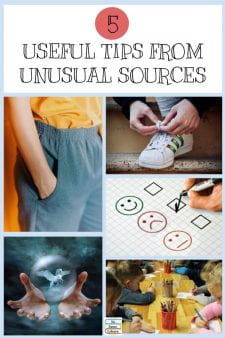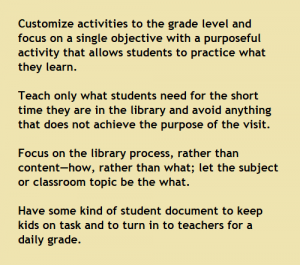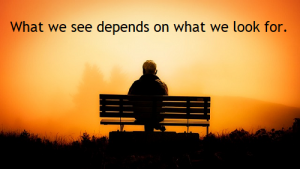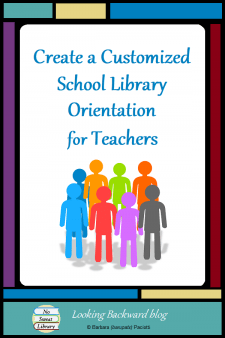 At the start of each school year, we have School Library Orientations for students, our goal being to encourage them to use the library and its resources. But this rarely puts us at the top of most students’ list of where to go for information or guidance on school assignments. How might we overcome that disconnect?
At the start of each school year, we have School Library Orientations for students, our goal being to encourage them to use the library and its resources. But this rarely puts us at the top of most students’ list of where to go for information or guidance on school assignments. How might we overcome that disconnect?
What predisposes students to use the school library as a primary resource for learning? The answer is obvious: teachers have the most influence over whether students use the school library! If they regularly bring students to the library for class assignments, then students learn that the school library is the first, best place to go for answering questions and solving problems.
Thus, we need to boost our credibility with teachers, show them how we can increase student achievement. We must familiarize them with our products and services…not an overview, but their particular content area and specific classroom assignments. We do that by creating a customized library orientation for our teachers.
THE SCHOOL LIBRARY HAS WHAT TEACHERS NEED
The twofold purpose of a teacher library orientation is to convince teachers we have exactly what they and their students need for any curricular unit, and to encourage them to collaborate with us on their lesson activities. Just as we do with student library visits, we can’t inundate teachers with everything we have; we just offer what they need for their immediate upcoming task. Accordingly, our custom library orientation need only show teachers the library’s resources for their 1st grading period topics of study.
First we determine what the school library has for each subject. Using subject-area curriculum guides or lesson plans, make a list of library resources that can enhance upcoming topic activities:
- professional teaching materials
- a cart of books for student use
- online subscription database features
- topical periodicals or realia
- a particular library lesson.
We may find we don’t have materials for every subject teacher need, especially if curriculum or lessons have changed. We can still help: School librarians get numerous materials catalogs through the mail, and we can organize vendor catalogs by subject so teachers can easily browse catalogs to give us purchase requests.
HOW TO SET UP A TEACHER LIBRARY ORIENTATION
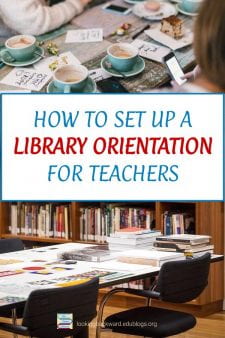 The days before school begins are packed with professional development and preparing for students, so teachers need to see we respect their time. Don’t schedule a single teacher orientation, but rather, set up a self-paced visitation available throughout the day.
The days before school begins are packed with professional development and preparing for students, so teachers need to see we respect their time. Don’t schedule a single teacher orientation, but rather, set up a self-paced visitation available throughout the day.
linebreak- Just as we capture student interest, “hook” teachers with food, like desserts and sweets! If you can’t do all that preparation, ask the PTA to help provide goodies. Intrigue teachers with a personalized invitation and a clever name, like “Desserts and Dewey”. Many online tools allow us to easily customize a document with colorful graphics for each subject.
linebreak - With students we focus on a single objective, and we need to do the same for teachers. To fulfill our objective to show teachers what we have for them, create a thematic display of selected physical materials using a table for each subject area. Include professional items in different formats as well as student-use materials.
linebreak - Just as we give students a meaningful activity to practice what they’ve learned, give teachers an activity that directs them to other bookshelf materials after they’ve examined their table materials. We can create a “Dewey map,” or better yet, create a short scavenger hunt for teachers customized to their content units—I call mine What “Dewey” Have For You?
linebreak - Show teachers we’re responsive to their curricular needs by giving them highlighters & sticky notes to mark bid vendor catalogs with needed materials they haven’t found by browsing their subject bookshelves.
linebreak - Spotlight digital library subscription resources that support first grading period topics. Designate certain library computers for each subject’s relevant services for the first grading period, and facilitate exploration into articles or features with a brief “how to” or WebQuest. (This can serve as a basis for student WebQuests.) Group like-subject stations so those teachers can sit together to collaborate.
linebreak - Let teachers experience how you customize a Library Lesson. Set up a lesson station with a slide presentation or video about copyright. Offer a copyright chart with guidelines for fair use of print or digital materials, printed on both sides and laminated, to take back to their classroom as a quick yet effective reminder during the rest of the school year. If we already have a Library Lesson for a 1GP topic, offer a copy of the Lesson Plan document to invite collaboration and a library visit. (Be sure your LP shows their Subject Standards!)
MY TEACHER LIBRARY ORIENTATION TIME SAVERS
- My personalized invitations include an “orientation lesson guide” to give teachers a preview of what they’ll do, and it allows them to work independently through the lesson whenever they choose to visit the library during the day.
- For subject signs on tables I use the plastic magazine holders I’ve set up for vendor catalogs. I have colorful graphic sheets taped to the sides to identify the subject, so I just grab them and place in the center of the appropriate table.
- To one side of the catalog container I put teaching materials like DVDs, kits, or idea books. To the other side, I offer a sample of a dozen or so books that are helpful for students. I include a topical list of other books for a classroom bookcart, and to promote teacher collaboration I suggest they begin a project with the bookcart in the library because there’s more room for students to spread out. (I keep these lists updated with new purchases because I use them to compile topical bookcart materials.)
- Within pertinent subscription services, I bookmark articles or create folders so teachers or students (or I) can rapidly find needed resources at a later time.
LONG TERM BENEFITS OF A TEACHER LIBRARY ORIENTATION
A successful faculty library orientation results in an increase in lesson collaborations and scheduled class visits. We won’t have every teacher participate every year, but many return periodically to check out new materials, especially after a standards, curriculum, or textbook update.
With more teacher-scheduled Library Lesson visits we overcome that disconnect between student orientation and student use. Students become more familiar with library offerings and more comfortable seeking out the librarian and library resources.
If you’ve not yet had a formal teacher library orientation, I encourage you to plan one now. Showing teachers that we consider them a primary partner in library services goes a long way to making the school library—and the School Librarian—a valuable resource for the school.


